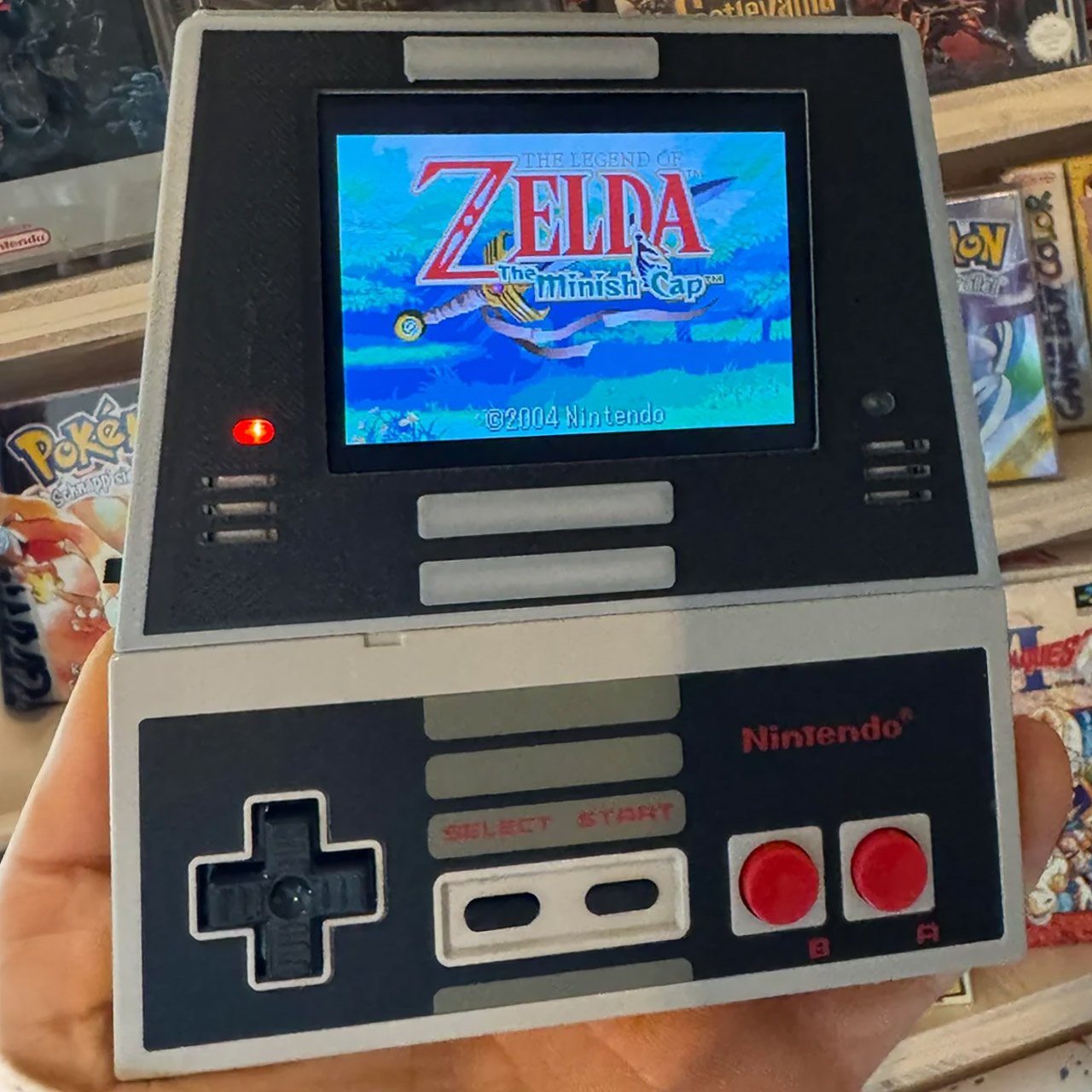Photo credit: MasaKee
A modder who goes by MaSaKee unveiled the world’s first NES-Boy Advance last week. This thing takes the guts of a Nintendo DSi and puts them in an NES controller shell, all wrapped in a 3D printed case. The result is a portable console that plays Game Boy Advance games on a crisp DSi screen, with the familiar buttons of an 80s Nintendo relic.
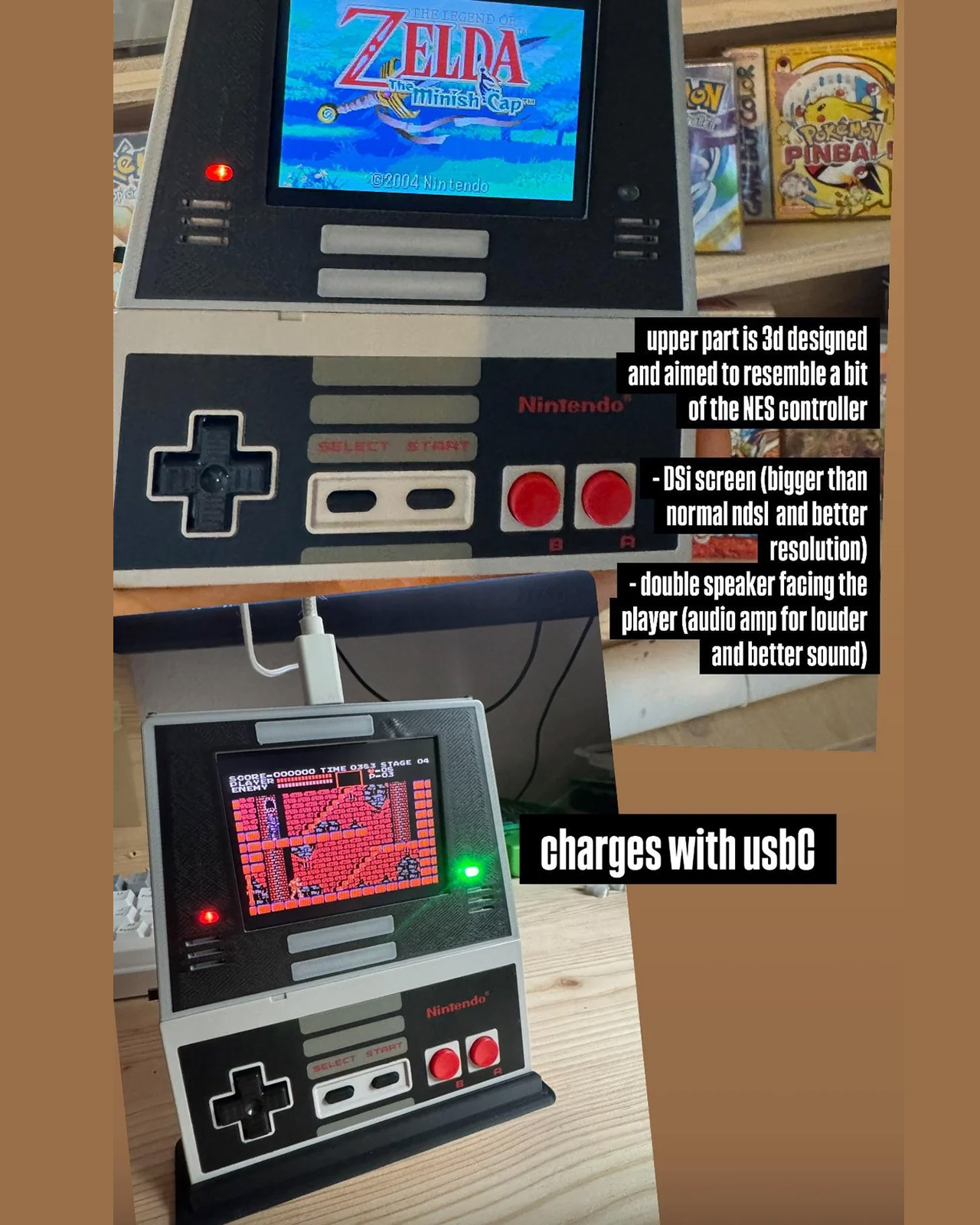
MaSaKee’s build starts with a gutted NES controller—the kind with the boxy gray plastic and red A and B buttons. He kept the original PCB intact, so the D-pad, start and select switches, and those iconic action buttons are all still there. That Nintendo handheld, slimmer than its predecessors, provides the brains: dual screens (although only the top one is used in this setup), processor, and a battery that lasts for hours.
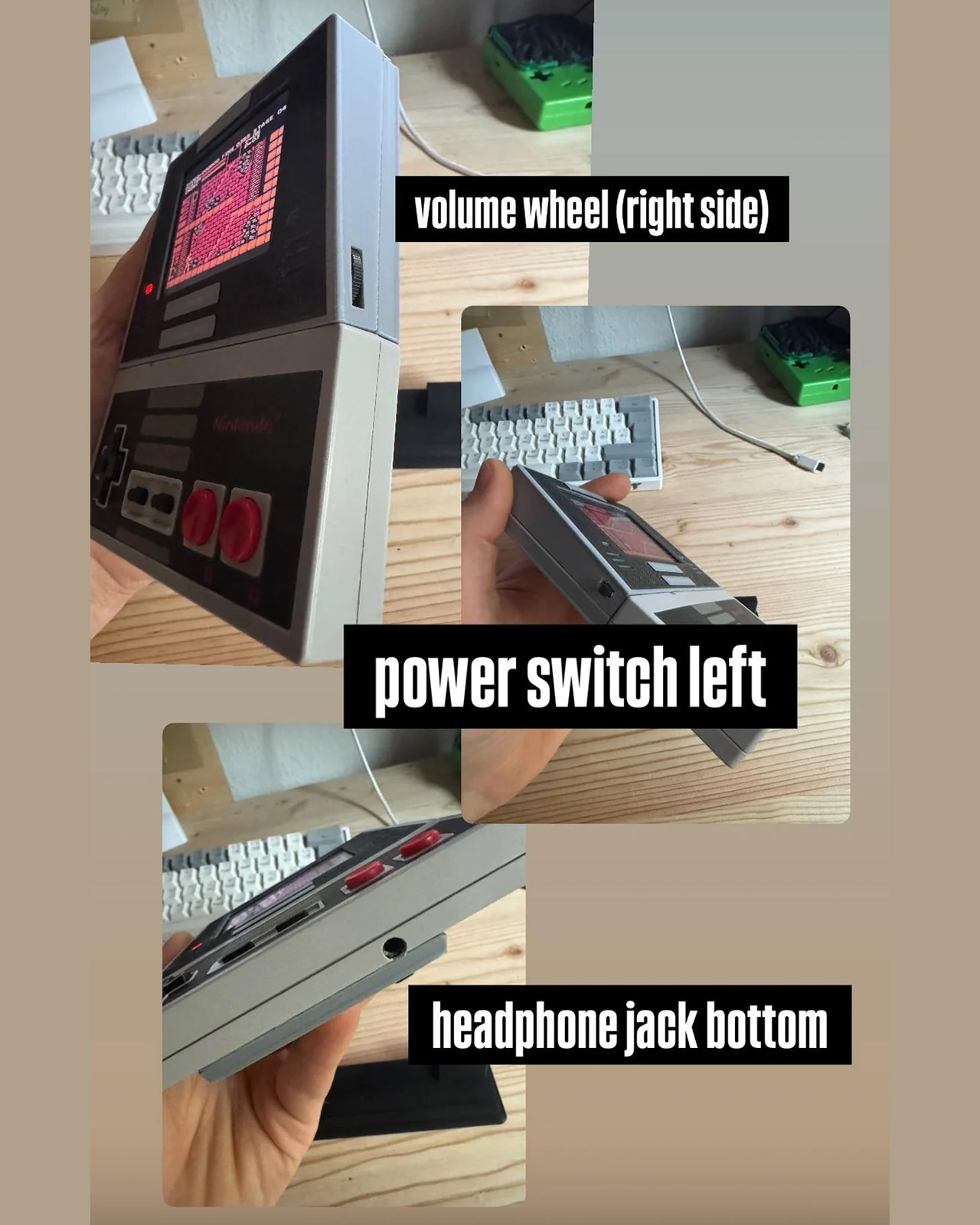
The case was designed from scratch using 3D modeling software before printing. The external shell is a replica of the NES controller below, with a raised section on top to hold the DSi screen at a slight angle for easier viewing. Charging and headphones ports stick out of the sides, while for the case, he went with a matte gray finish to match the original NES aesthetic.
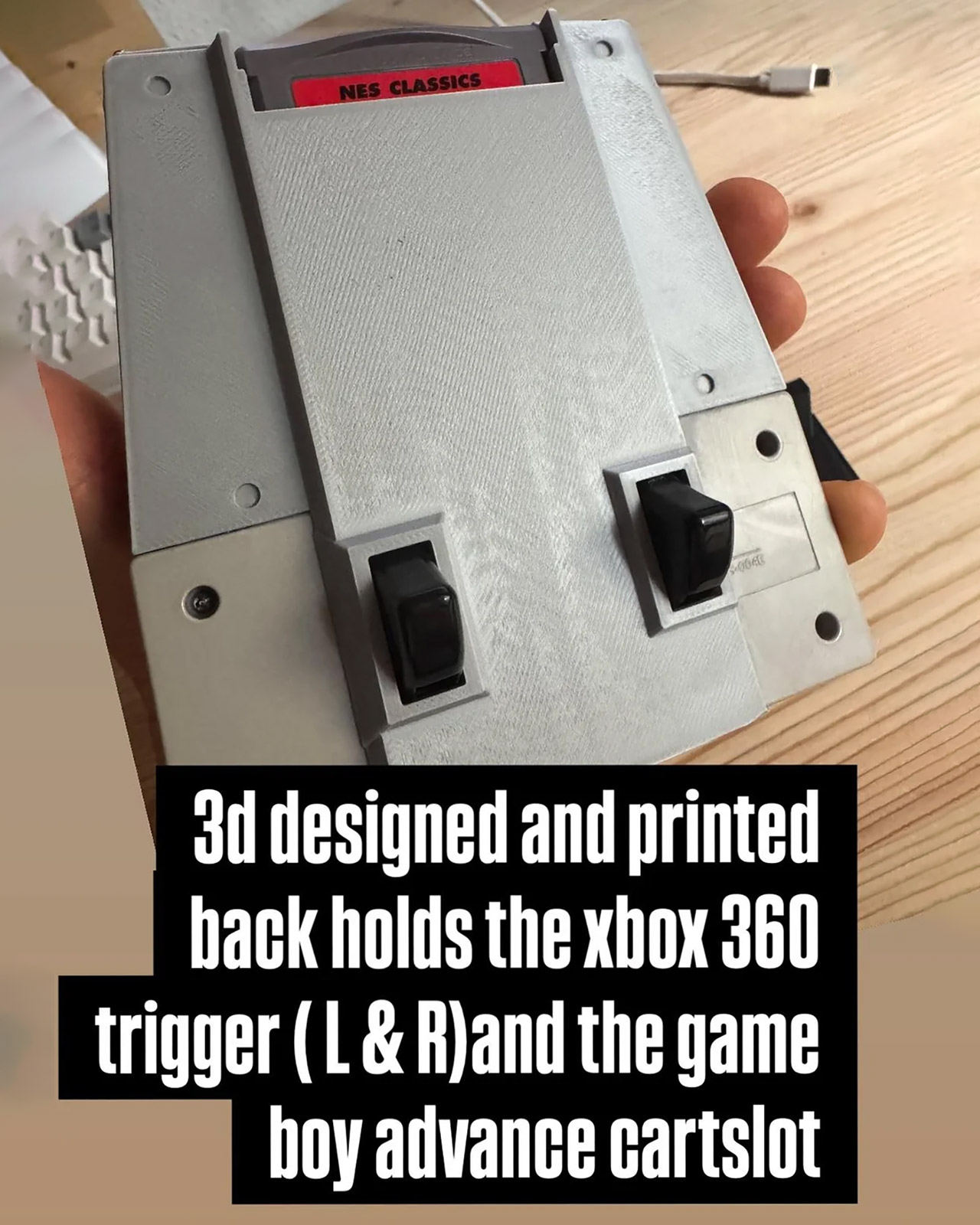
First, the NES controller PCB is inserted into the bottom half of the 3D printed casing, with the D-pad flush with the thumbs. The DSi motherboard is then installed, trimmed to the necessary dimensions, and fastened with standoffs printed into the casing. Wires connect the NES buttons to the DSi input headers—simple soldered connections that map A to jump and B to run, with no new coding necessary. Total build time? Approximately 20 hours split over days of iteration.
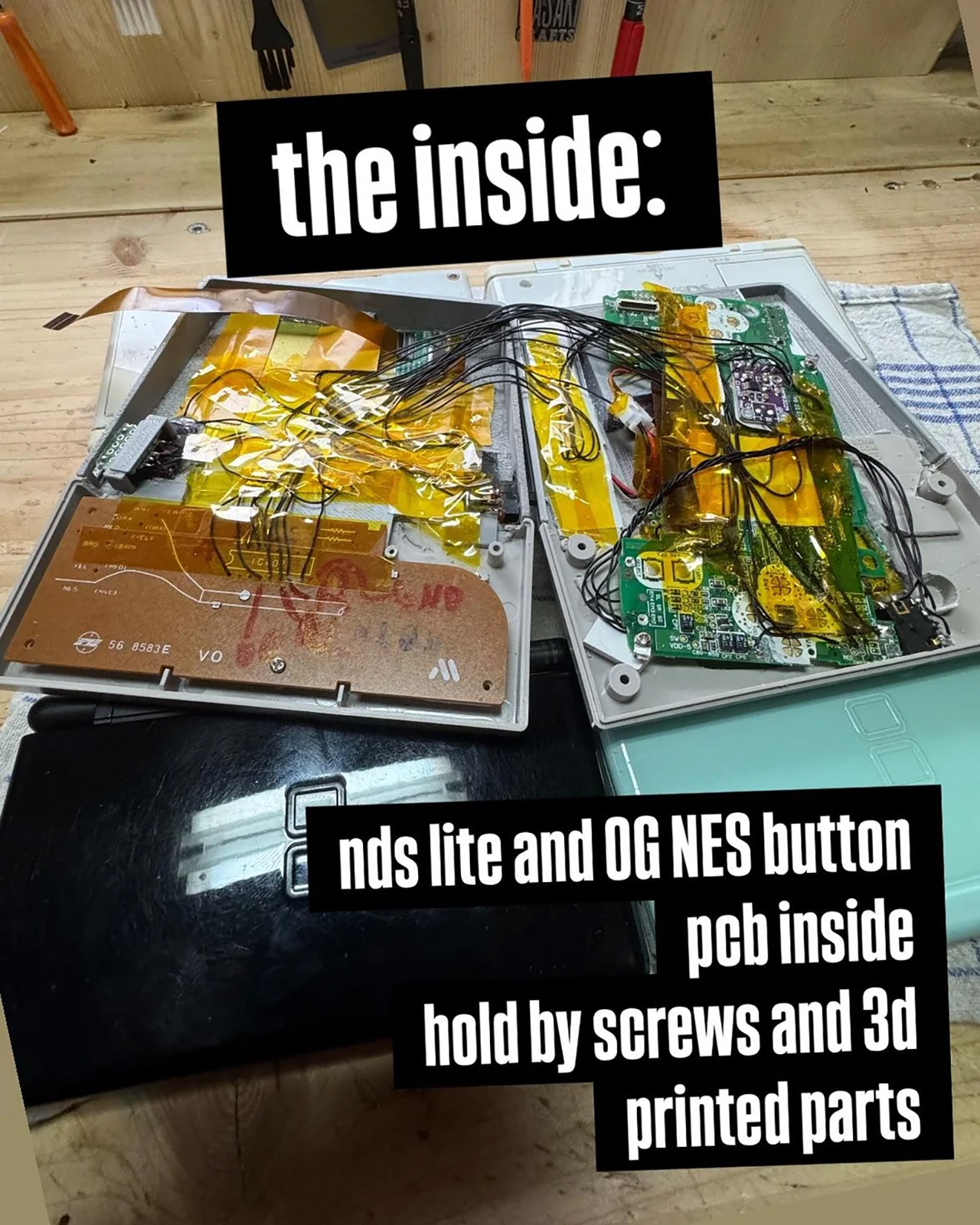
Analog triggers from a spare Xbox 360 controller handle any GBA games that demand precise input, such as racing games where feather-light presses are crucial. The battery compartment is located in the base and can be accessed via a sliding panel, while a USB-C port is used for charging it.
[Source]
